
|   |

|   |
 e-mail: sunilkothari1933@gmail.com Bhopal Diary April 12, 2018 Dhrupad Sansthan Gurukul Photos courtesy: Dhrupad Sansthan Gurukul I was visiting Bhopal after three or four years. Last time I visited was to participate in a seminar on Ratan Thiyam's plays. Six of his plays were staged back to back, with one day gap for a seminar. I have been associated with Ratan Thiyam for more than 30 years and have seen his plays within India and abroad and am a great admirer of his works. During that brief visit, I had missed visiting Gurukul of Gundecha Brothers and also the Tribal Museum. Anita Ratnam had specially asked me not to miss it. Therefore the visits to Gundecha Bandhu's Dhrupad Gurukul and Tribal Museum were on my list. 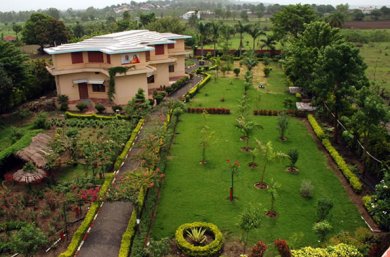
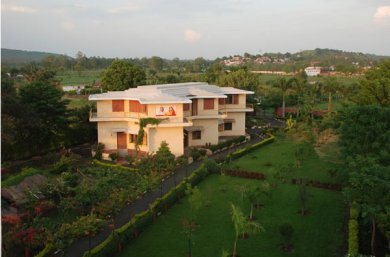
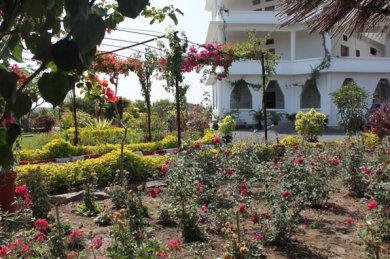

The Gurukul
Within last five years, the Gurukul has developed a lot both in terms of
resident students from within India and abroad and the construction of
various hostels and class rooms to provide all facilities. In the
main building we saw several photographs of senior musicians who have
visited the Gurukul and where the classes are held.Inaugurated by Pandit Bhimsen Joshi on 4th November 2004 on a 3 acre land behind Vana Nidhi Nursery at Suraj Nagar, the Dhrupad Sansthan is a major centre for studying Dhrupad under Guru Shishya Parampara. Both the brothers Ramakant and Umakant were born in Ujjain, completed their academic studies with MA in Music and Commerce and studied Dhrupad under great ustads from a young age - Dhrupad vocalist Ustad Zia Fariduddin Dagar and also Zia Mohiuddin Dagar, distinguished performer of Rudra Veena at Dhrupad Kendra under Guru Shishya Parampara. With the best of training under the great ustads, both brothers have become well known nationally and internationally. We saw their Guru Ustad Zia Mohiuddin Dagar's big portrait, kept in the center of the main building. Ramakant ji told us about the Dhrupad International Day they had held recently. They had performances for twenty four hours by several senior and junior disciples, Indians and foreigners. They plan to celebrate Dhrupad Day every year. "We do not want UNESCO to announce Dhrupad Day, we shall set the tradition," said Ramakant ji with pride. Both Ramakant and Umakant and their young brother Akhilesh who plays pakhavaj, have become household names in field of Dhrupad. Akhilesh has studied pakhavaj from Pandit Shrikant Mishra and Raja Chhatrapati Singh Judeo. He has accompanied Ustad Zia Fahimuddin Dagar, Pandit Shyam Tiwari, Ashagari Bai, Ritwik Sanyal, and has played several solos in major national and international music festivals. 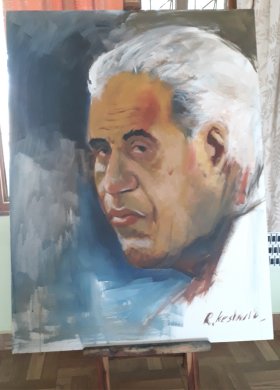 Portrait of Ustad Zia Mohiuddin Dagar 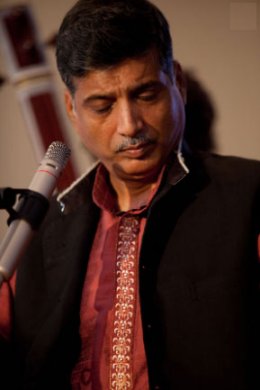 Ramakant Gundecha 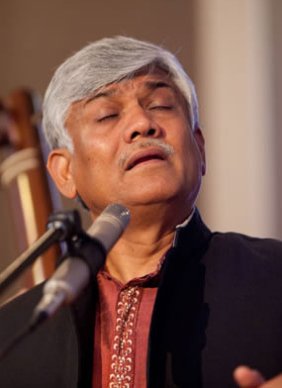 Umakant Gundecha I had met their father during the seminar in the morning and expressed my desire to visit the Gurukul. Many years ago with former secretary of Sangeet Natak Akademi, Keshav Kothari, I had visited their residence. I remember that during that year at Khajuraho Dance Festival, Gundecha Bandhu had accompanied Astad Deboo for his dance which was in form of a prayer. They were expanding their area of performance and Keshav had felt at that time that both the brothers should concentrate on singing only. However, it was interesting that they worked with a dancer. Later on, they sang for Chandralekha's production Sharira. I met them often during the rehearsals at Chandra's place in Chennai and also travelled abroad with them and Chandra. Our friendship developed from those early days. Three years ago for Kumudini Lakhia's choreographic work for a Kathak performance in Singapore, they had provided music. It was a great pleasure to see their progress, training schedule and performances. They have received several fellowships, awards and honours, including Kumar Gandharva Award, MP Government Fellowships, Ustad Allaudin Khan Fellowship, Sanskriti Award and in 2012, civil honour Padma Shri for their contribution to Dhrupad and classical music. Their CDs have been released by major recording companies including HMV, Music Today, Sony and also abroad by companies in Berlin and London. Visiting various premises of Dhrupad Sansthan we learnt a lot not only about their training young generation of resident disciples who exceed now 50 and their stay in the hostel, but also about the use of solar heating system, the latest technology of recycling water and the most unusual but imaginative residential quarters for their family that we saw under construction, opening like an ashtadala lotus- the experience was quite fascinating. Visiting the hostel, we met Umakant Gundecha who was taking classes there as some construction work was on and therefore training was given in quiet there. The kitchen, the dining hall, the duties for various chores divided among the students et al, was in keeping with the principles of self- reliance. The trees, the greenery and the peace are ideal for a Gurukula. We were taken to a Saraswati temple also built all in white with white marble and were told that a pujari performs regular puja there. Ramakant Gundecha told us that for three months they observe holidays as their foreign tours and other commitments have to be accommodated. The working plans are well coordinated. I learnt that once a month they teach as a part of workshop at NCPA in Mumbai and also in Delhi at Sangeet Shyamala, now being run by Chetna Jalan. The Gurukul also has Dhrupad Kendras at Bangalore, Chennai, Hyderabad, Kolkata, Rishikesh, and Kathmandu-Nepal. Their students conduct classes there. And they supervise training from time to time. Besides such facilities there is facility for teaching online with Skype. For those who are interested in Dhrupad and want to study under short term course system for a month or four months, they have made arrangements for such courses and they can stay at Dhrupad Sansthan Gurukul. And for 'Dhrupad rasikas' also there are arrangements for short visit and study yoga, meditation as a part of regular training. Guru Umakant's son Nirant Gundecha and Guru Ramakant's son Anant Gundecha sing as a duo. Umakant's daughter Dhani Gundecha also sings Dhrupad individually. 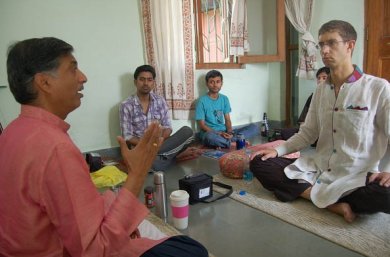 Ramakant Gundecha teaching 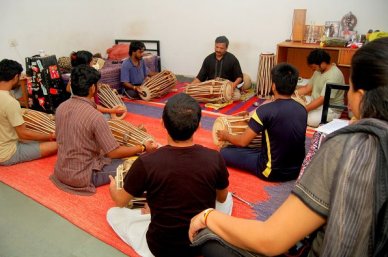 Akhilesh Gundecha teaching Akhilesh Gundecha has a Tala Vadya Ensemble known as Madhya Laya. He has been training disciples in pakhavaj and has a large number of students. They invited us to stay at the Gurukul for a week or so, in order to savor the atmosphere and the music. I am planning to do so during my next visit. Today their Gurukula has become an important institution for Dhrupad for dissemination of knowledge and intensive training. I recommend readers of this column to make it a point to visit Dhrupad Sansthan Gurukula. The Tribal Museum Photos: Dr. Sunil Kothari The Tribal Museum in Bhopal is very thoughtfully planned and the entire campus is theme based right from its entrance. Every art work has some meaning to it which is beautifully depicted but difficult to decipher without basic knowledge of the tribes. Therefore the best way to understand was to ask for a copy of their colorful brochure which describes meaning of all the major artifacts. We met Shri Ashok Mishra, who very kindly gave us the brochure in Hindi. We also got in English, brief introduction about the museum that helped us to follow the six galleries. The museum is well planned in a campus which is divided into 6 galleries depicting Cultural Diversity, Tribal Life, Tribal Art, Tribal Mythology, Tribals of Chattisgarh and Tribal Games. It also has an Art Exhibition Gallery and Open Air Theatre. We were told that regular performances take place there by visiting artists, dancers, musicians and even mime artists. On that evening, a visiting French musicians group from France was to perform in the open air. Next day the Gundecha Bandhus were to give a recital. I found this very fascinating and meaningful, so that those who come to attend the performances see the museum. Some of our classical dancers from other states have also performed there and are also invited by the museum authorities on special occasions. All the major artifacts in galleries are taken from seven major and most important tribes of the State, namely, Gond, Bheel, Korku, Kol, Bharia, Baiga and Saharia. The area is vast and extremely well lit up with colourful lighting creating an ambience that takes one's breath away. I had no idea of what to expect. But once I entered the different galleries, I was overwhelmed at the diversity and imaginative display, recreation of the tribal houses, their costumes, jewelries, toys, offerings of terracotta animals, iron art objects, pots and pans, ornaments and architecture of their residences. Slide show 

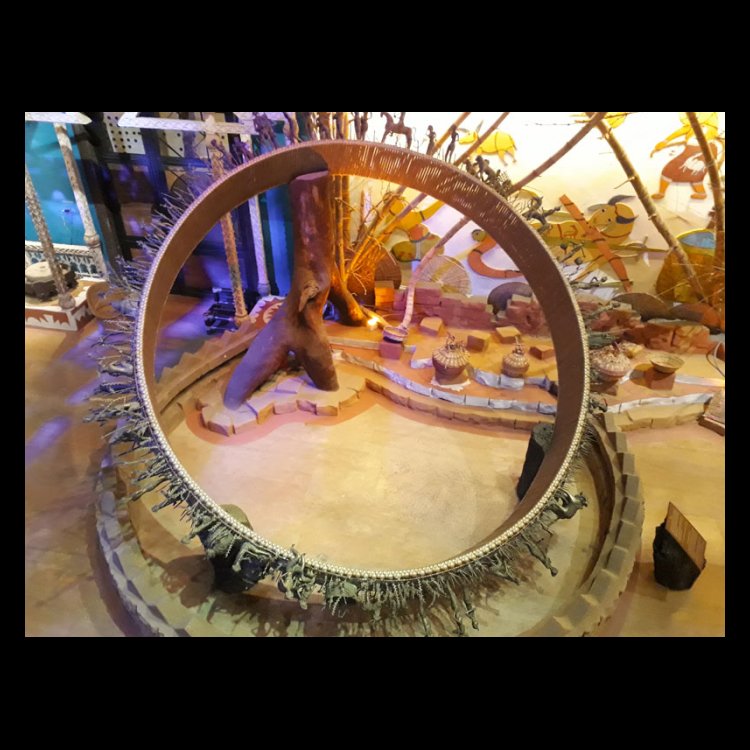
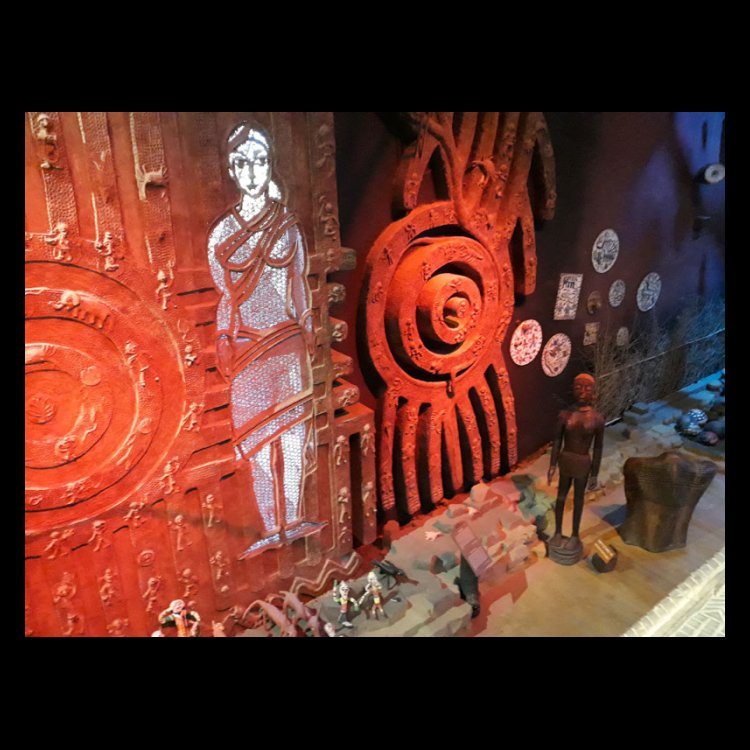
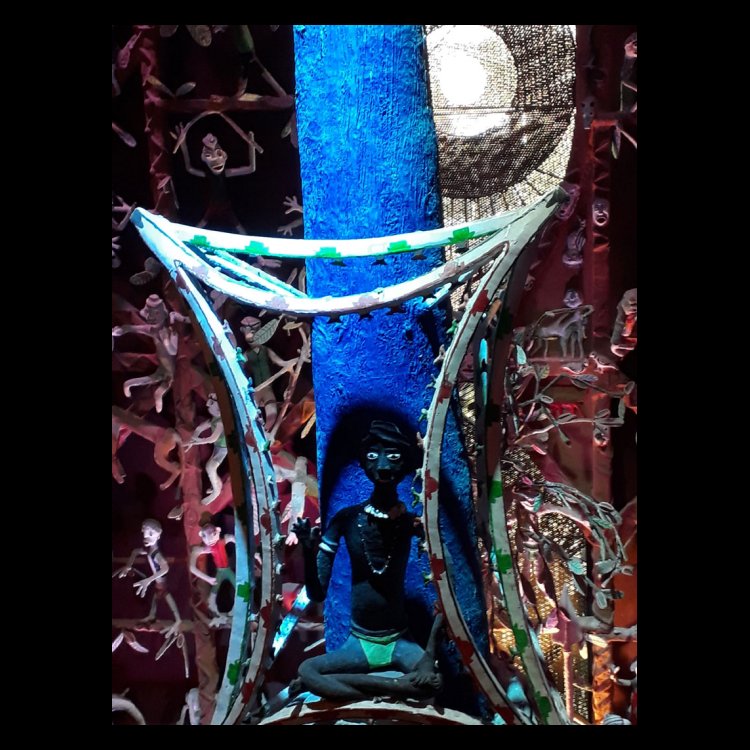
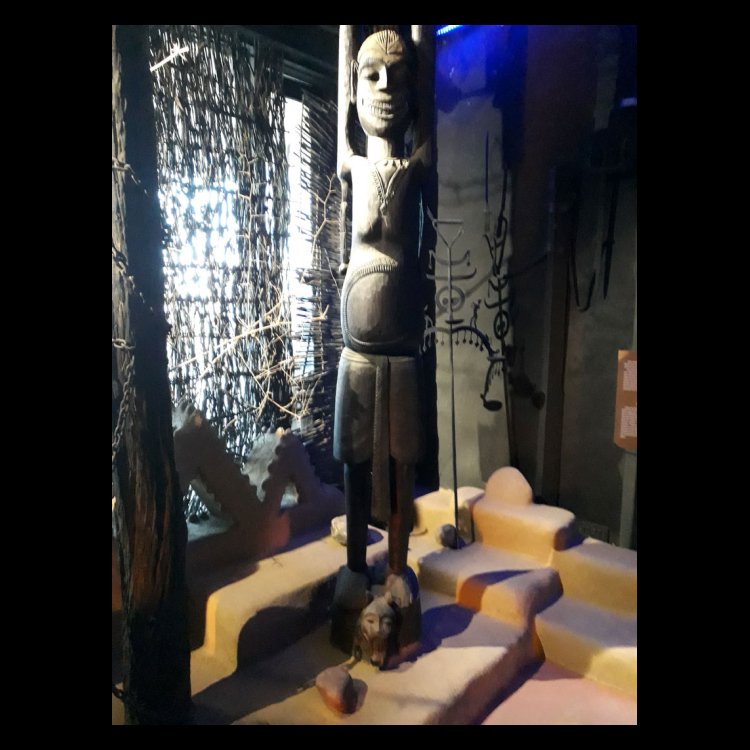

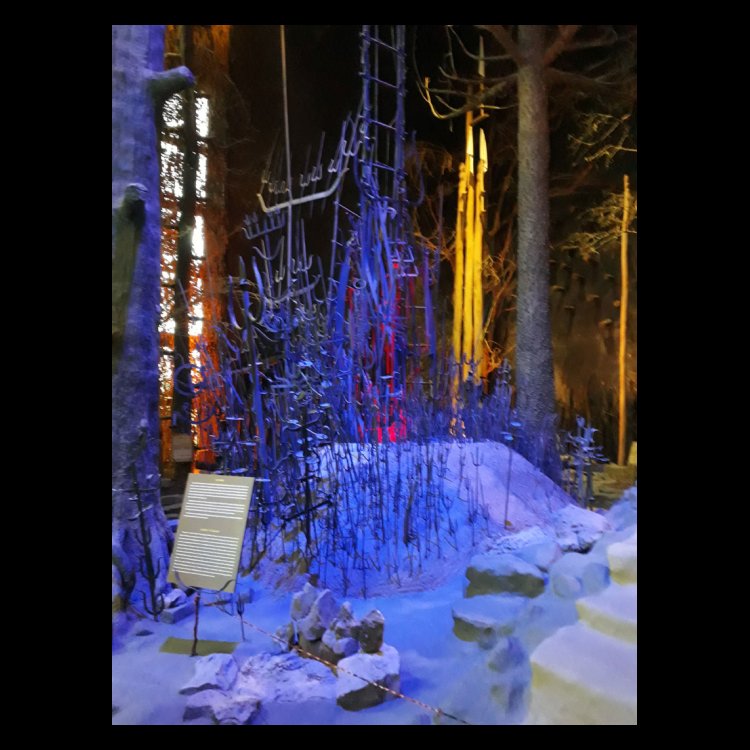
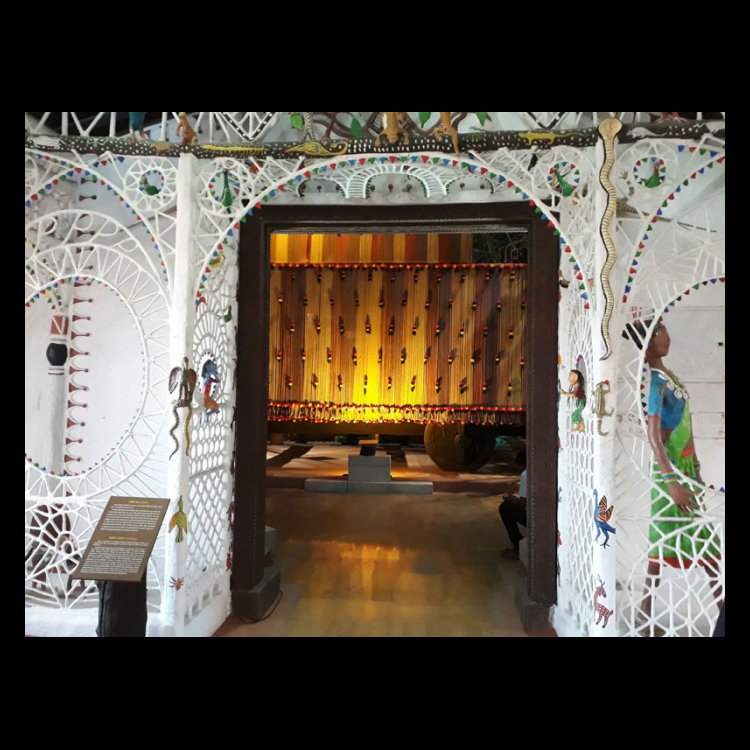
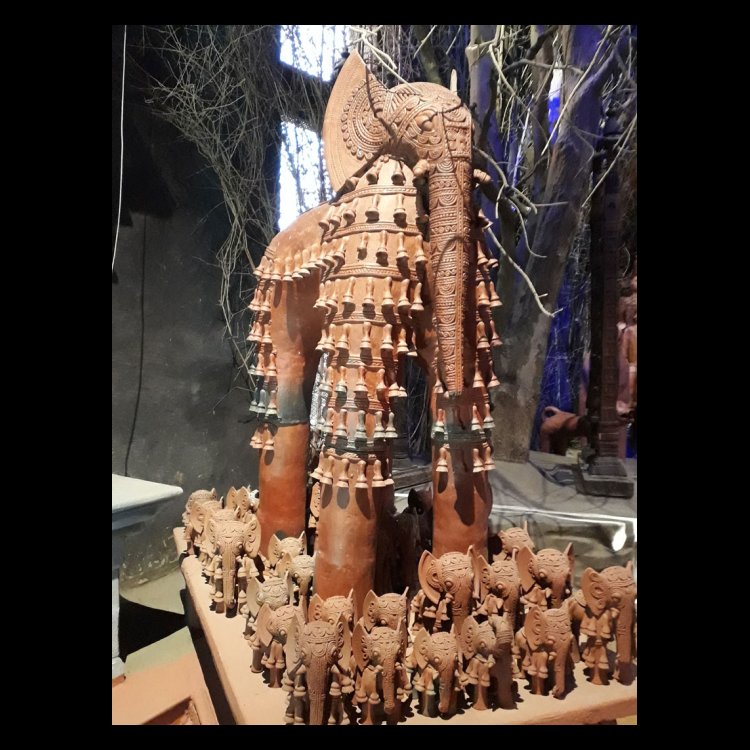
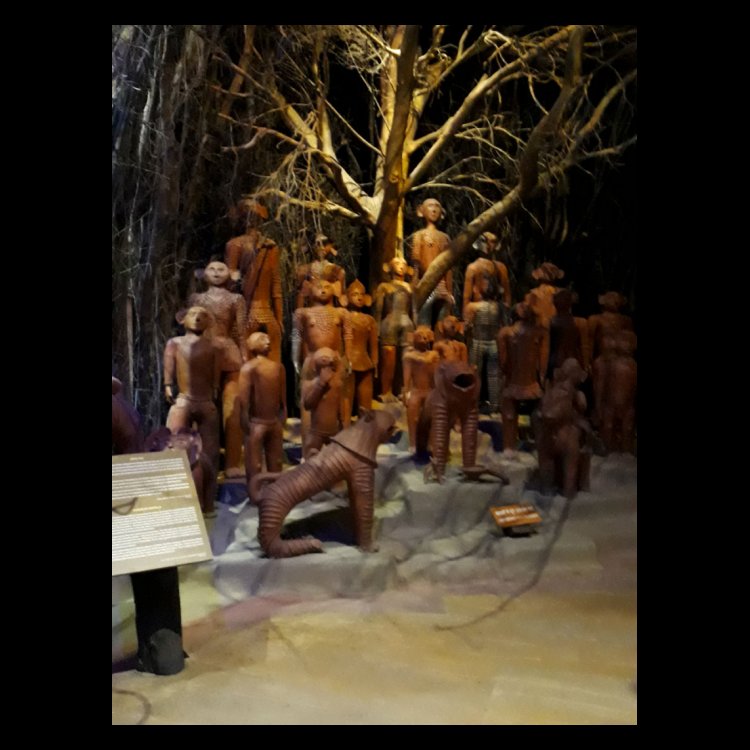
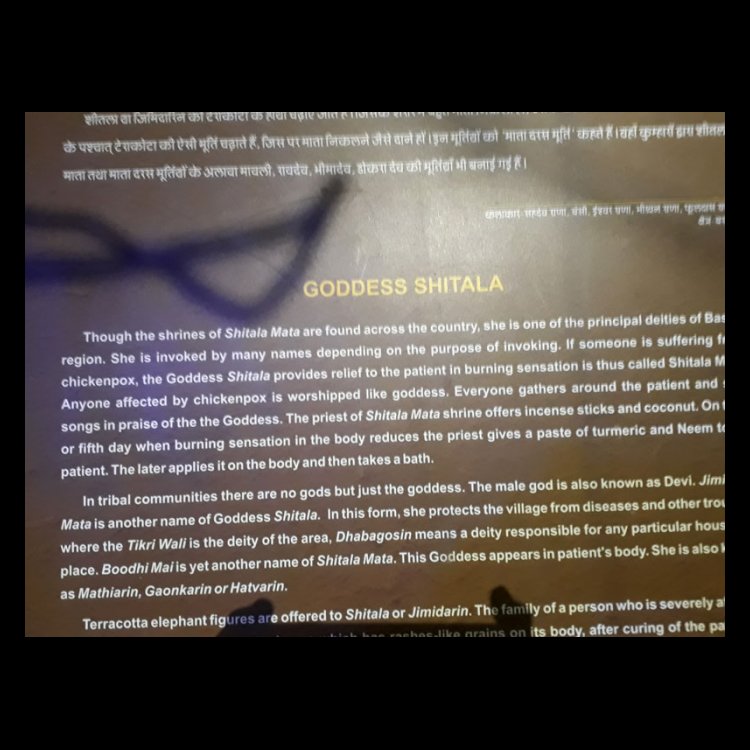
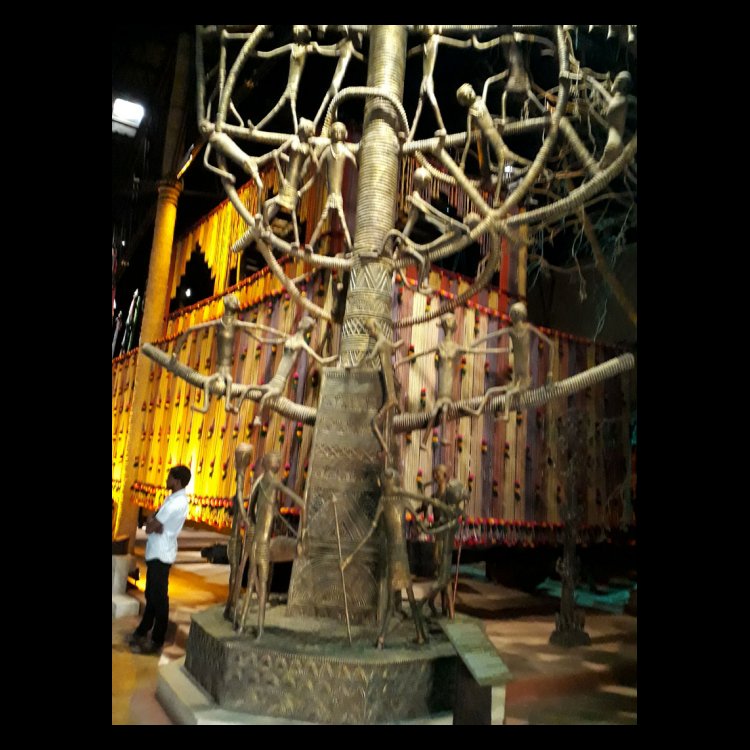
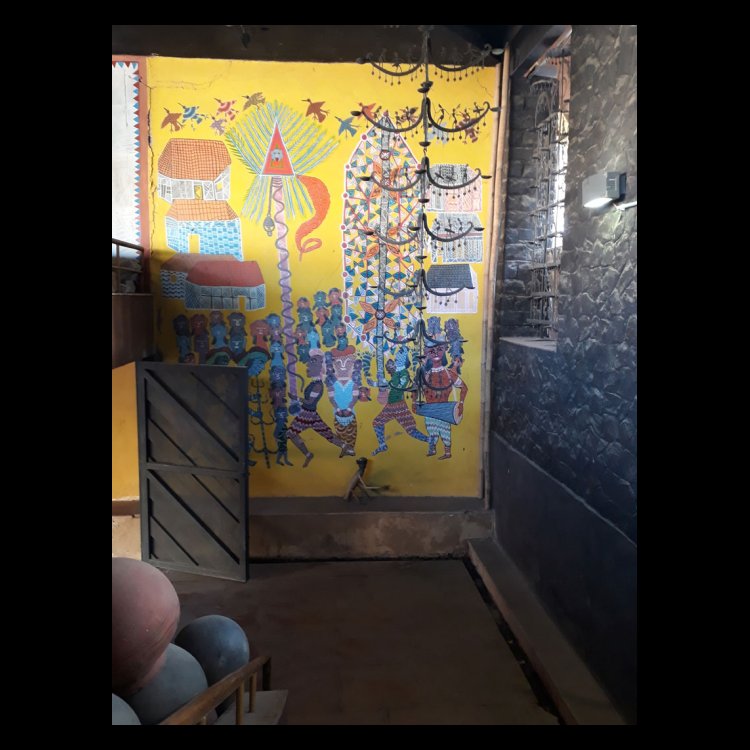
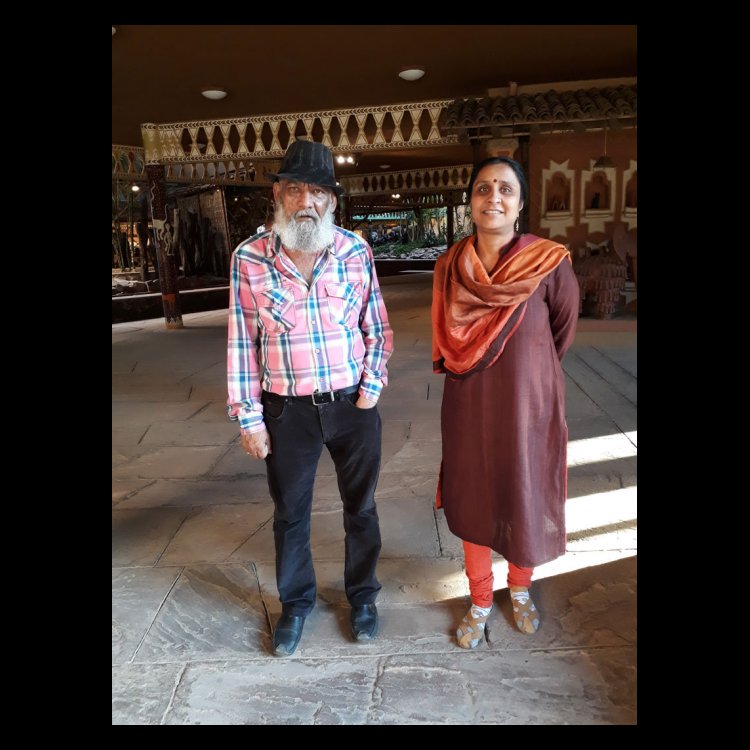
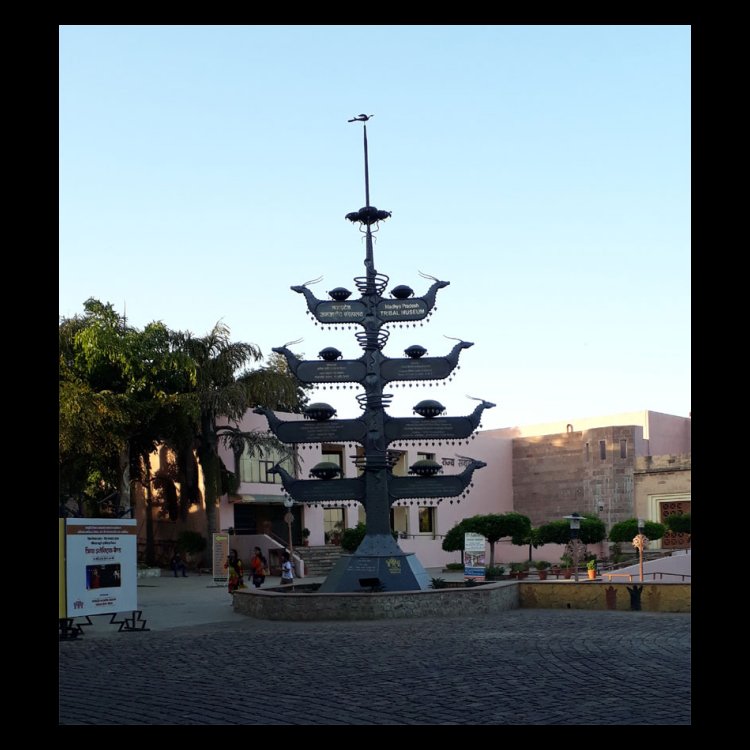
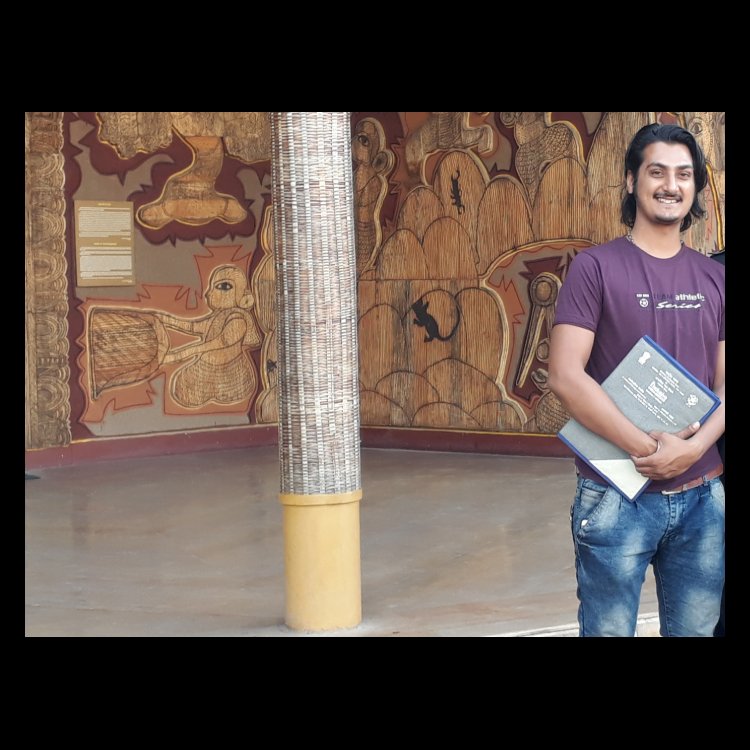
Gallery 1 shows the cultural diversity of various tribes in Madhya Pradesh and adjoining states. The sheer size of Madhya Pradesh where Eastern Border to Western Border is spread 1000 km apart allowed many tribes to flourish independently since ancient times. The gallery depicts the diversity in a very innovative form. This gallery even tries to address life in pre historic Gondwana land. Interesting display boards are placed both in Hindi and in English explaining various tribes and their life styles and rituals. Gallery 2 shows day to day life of tribals, their houses, how they live in them, what all basic methods and tools they use to preserve food grains, to cook, and the material used to build houses and decorative artifacts. This gallery is a visual treat, though the houses built look so glamorous that they are far from tough environment that they live in. It still provides good insight of their life styles. Gallery 3 is all about the art and culture of tribal life. Everything in tribal life revolves around the circle of life i.e. birth, marriage and death. All the festivities and artifacts revolve around this, whether songs, dance or display art. This gallery is a perfect fusion of a hypothetical theme based on tribal stories as envisioned by modern artists and created by tribal artists using materials and style of their respective tribes. Built around central theme of marriage with a huge two level marriage canopy built in center, this is probably the most interesting gallery in the entire museum. Beautifully designed, large replicas of tribal jewellery are one of the major attractions here. I saw a huge bangle of large dimension that looked mind boggling. The way it was displayed it was not possible to see it. Therefore I climbed the two story marriage canopy and took a photograph from there. Even if one does not know the story behind every piece of art, the colors and light used to depict them mesmerizes one. I had with me Orijit, son of Rita Ganguly, who wandered with me with eyes of wonder as we had not seen anything like this in any museum, nor had we expected it when we entered the museum. Gallery 4 is dedicated to mythological beliefs of tribes - every tribe and its sub- tribes have their own mythological belief and view about the creator and destructor. Every tribe has its own way to appease them. Tribals normally do not have large temples or prayer halls. Instead they find their own ways of worshipping sky, land, fire, water, animals, forests or any other forms - dead or alive. Mythological / spiritual gallery tries to represent that in a very somber way. We were told that small kids sometimes even got horrified looking at it. But it clearly passes on the message that the power of spirits is supreme. One of the most interesting artifacts here is depiction of Bheel worshipping Bababdev. Such places of worship are normally found in every Bheel village in Jhabua district where tribals normally keep their presents which are normally terracotta sculptures in the shape of various animals. This revered place is normally the highest place where the presents pile up over the years .The offerings start taking huge shape. Moreover, tribal practices allow them for live sacrifices of animals. The look of this Babadev pile up is terrifying at first, but we were told that they have very deep spiritual meaning. The gallery has given equal representation to mythological figures of other tribes as well. Gallery 5 is made for guest state and currently we saw various exhibits which gave details about tribals of Chattisgarh. I had taken permission to take photographs on my cell phone. Some of them are strikingly interesting mainly because of excellent lighting arrangement. Gallery 6 is for showcasing the various games children of these tribes play like pitoo, stilt and many other indigenously discovered fun activities that keeps them busy. Before returning to the hotel, I expressed a desire to meet the main architect, designers and artists working there. So we were taken to the office in the basement where we met Harchand Singh Bhatti who had designed many sections. Two female assistants were also there who explained us how the entire museum had come into being. I had known Shri Kapil Tiwari who had planned this museum and also the one at Khajuraho. The museum remains open on all days from 12 noon to 8pm, except on Mondays and State Holidays. I am glad that I insisted on seeing the Tribal Museum and enjoyed looking around for nearly two hours. It makes one want to visit it again and again. It is one of the finest museums of Tribal Arts of an international level with state of art technology. There is also a shop for purchasing artifacts. I strongly recommend readers to visit the museum during their visit to Bhopal. The centre for major performing art activities indeed are Bharat Bhavan and another auditorium Rabindra Bhavan, where Ustad Allaudin Khan Sangeet Academy is situated. During the seminar when we were there, an exhibition of huge collection of paintings, drawings and sketches of renowned painter Sudhir Patwardhan was on. When Bharat Bhavan was inaugurated by Peter Brook many years ago, I was there and have happy memories of several visits thereafter when Ashok Vajpeyi arranged several events till he moved as a Secretary, Dept of Culture, Govt. of India, to Delhi. Bharat Bhavan is an important cultural institution where activities of literature, theatre, exhibitions of paintings, dance performances and seminars take place round the year.  Dr. Sunil Kothari is a dance historian, scholar, author and critic, Padma Shri awardee and fellow, Sangeet Natak Akademi. Dance Critics' Association, New York, has honoured him with Lifetime Achievement award. Post your comments Please provide your name and email id when you use the Anonymous profile in the blog to post a comment. All appropriate comments posted with name & email id in the blog will also be featured in the site. |